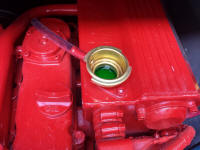
110 Cookson Lane | Whitefield, ME 04353 | 207-232-7600 | tim@lackeysailing.com
Summer Song | Friday, May 16, 2014/Wednesday, May 21, 2014
Much later, I turned to some final preparations and projects, some related to the earlier phase of work, some not.
Preparing to run the new engine for the first time, I spent an afternoon installing fluids. I filled the coolant tank with an antifreeze solution.
I added new 15W-40 diesel engine oil to the crankcase.
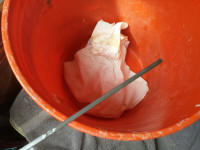
I filled the Racor filter housing with clean diesel fuel (clear undyed road fuel in this case).
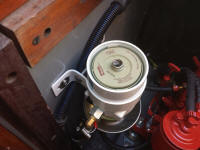
I'd removed the raw water pump impeller for storage, but now I reinstalled it in its housing.
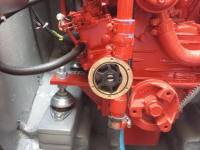
I'd hoped to crank the engine, but my attempt was stymied when I discovered that one of the two batteries on hand was completely dead, and the other undercharged. I'd prepared ahead by putting these batteries, which I'd had in the shop for storage all winter, on a charger a few weeks earlier, but I'd not actually tested them at that time. The owner made a decision to purchase two new batteries, so until I could get those on hand, I postponed the engine test.
On another day, with the batteries and some time on hand, I completed the battery installation.
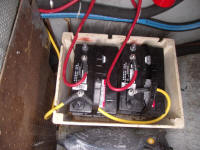
I made final preparations to crank the engine, beginning with re-checking the fluid levels I'd added earlier. Then, I began the initial fuel system bleed, a straightforward process on these engines since they are essentially self-bleeding and don't require the old-fashioned rigamarole to achieve an air-free fuel system. Using the little manual handle on the engine-mounted fuel pump, I began to draw fuel into the engine filter, checking the bleed screw as needed. As I pumped, I could watch the dyed red diesel from the boat's fuel tank enter the clear fuel in the filter, which was fun to see.
After a time, I felt I'd bled the system enough to try the engine. On this boat, I'd installed a so-called "waterproof" control panel from Beta, the main difference appearing to be the lack of a key. The engine cranked and started, but was still a bit fuel-starved and stalled, so after a couple more cranks I re-bled the system at the secondary fuel filter before trying once more. This time, the engine remained running, and soon smoothed out.
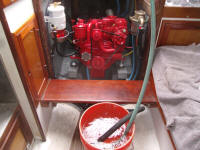
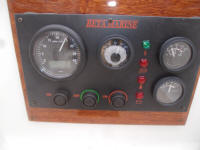
I took several short videos that you can view here at my brand-new YouTube channel.
These are my first-ever videos (no, I am not starting down this road), and maybe someday I'll have the patience to embed them, but not now.
With the engine settled into a steady purr, I checked over all aspects of the installation looking for leaks or other issues. None found. After running the engine for several minutes, I shut it down so I could recheck the oil and coolant levels, as these often dropped during initial engine runs when the fluids dispersed to all areas of their respective channels. Then, I restarted the engine, and this time ran it longer, allowing it to come up to temperature, and tested various throttle settings while going over the whole system once more to check for leaks or other issues. In all, I ran the engine for around 20-30 minutes. Idle speed was 800 RPM.
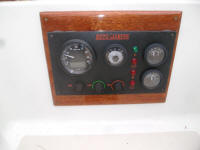
Afterwards, I masked off and painted the bottom.
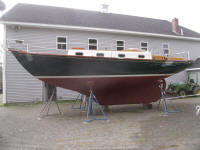
I had a few projects and odds and ends to take care of on board before the boat was ready to go, but with the engine set and bottom painted, nothing stood between her and the water.
Total Time Billed on This Job Today (over two days): 5.25
Hours
